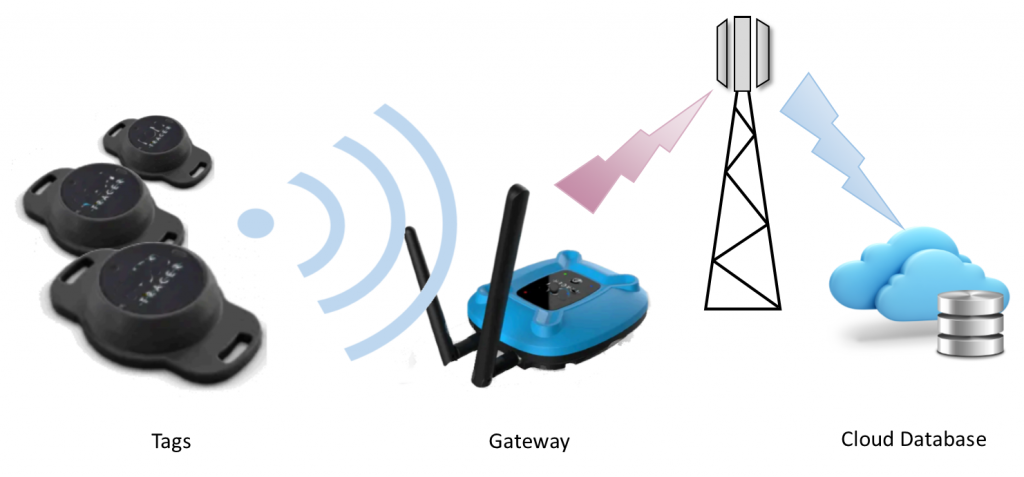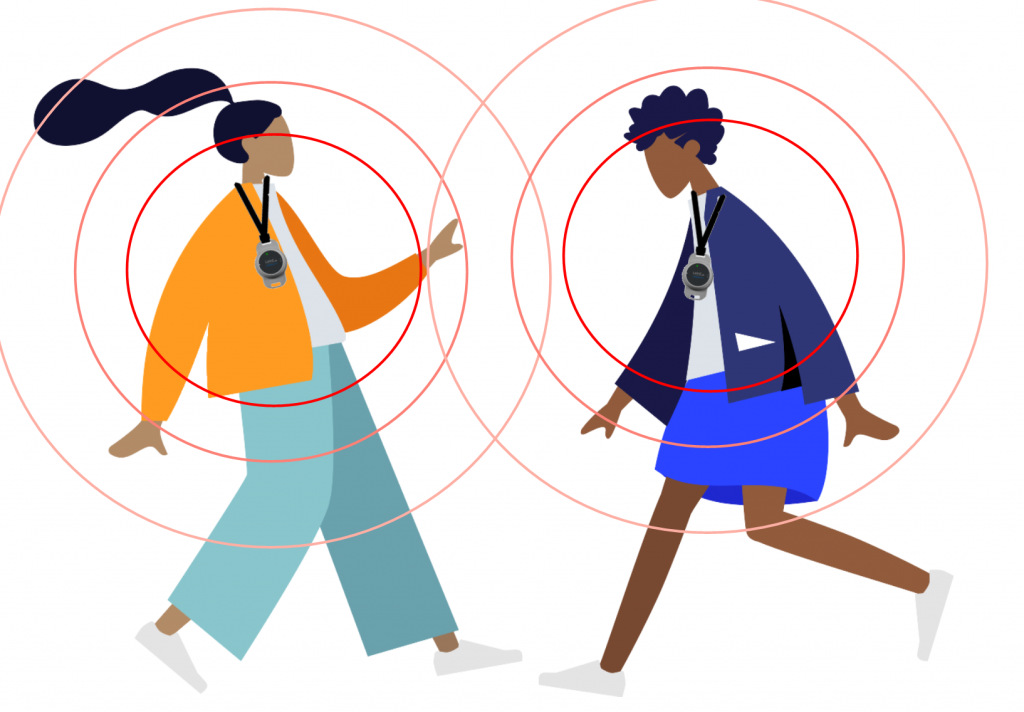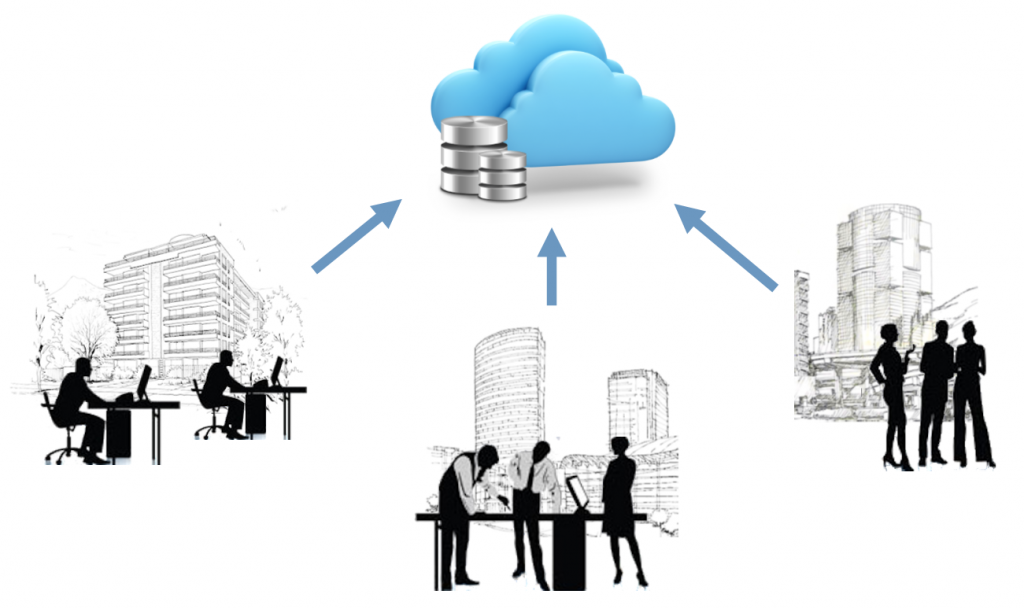Unfortunately, this product is no longer available

According to the CDC, contact tracing is key to slowing the spread of COVID-19. It helps keep you, your family, and your community safe. In general, contact tracing involves identifying people who have a contagious disease (cases) and people who they encountered (contacts) and working with them to interrupt disease spread. This includes asking people with COVID-19 to isolate and their contacts to quarantine at home voluntarily.
This article reviews the best ways to provide contact tracing.
Manual Contact Tracing is Arduous and Uncertain
The CDC recommends the following process:
- Interviewing people with COVID-19 to identify everyone they had close contact with during the time they may have been infectious
- Notifying contacts of their potential exposure
- Referring contacts for testing
- Monitoring contacts for signs and symptoms of COVID-19
- Connecting contacts with services they might need during the self-quarantine period
Unfortunately, manual contact tracing is complicated and sometimes provides uncertain results. It relies on people’s cooperation and memory. It has also been politicized, and this makes it hard to get the information that the tracers require.
The article in the Health Care Blog highlighted the challenges of tracing for Covid-19. They mentioned that “we see at least four overlapping aspects of how COVID-19 contact tracing is becoming politicized: 1) perceptions of interference with civil liberties, 2) perceptions of loss of privacy rights, 3) recent social unrest amplifying distrust of government, and 4) controversy over the hiring of private firms.”
The Boston Globe recently reported that “Contact tracing for coronavirus in Mass. significantly downscaled as leaders report chronic problems.” The article describes the difficulty faced by Health Tracers in Massachusetts.
Some new digital systems are coming online that help with the process of contact tracing.
Digital Contact Tracing Systems
Digital contact tracing uses Bluetooth or GPS to detect when people encounter each other. Several systems have been introduced that digitally and automatically provide contact tracing.
BlueTrace Application Protocol
BlueTrace is an open-source application mobile protocol that was developed by the Singaporean Government. It was developed in response to the COVID-19 pandemic. It is a mobile application that facilitates the digital contact tracing of users.
In this system, each mobile device advertises its presence and also scans for other devices. The devices measure the strength of the signal to determine the distance from each other. Australia has already adopted the protocol, and many other countries such as New Zealand are considering BlueTrace for adoption. One of the core principles of the protocol is to preserve privacy.
Apple and Google Contact Tracing App
One of the more popular tracing systems was announced in April 2020 by Google and Apple. Their system uses smartphone apps and Bluetooth proximity to create a contact list. Exposure Notification (ENF), is a framework and specification developed by Apple Inc. and Google to facilitate digital contact tracing during the 2019-20 COVID-19 pandemic. When used by health authorities, it augments more traditional contact tracing techniques by automatically logging encounters with other ENF users using their Android or iOS smartphone. It keeps a history of proximity detection with other smartphones and logs the amount of time they were close.
Unfortunately, issues of privacy and lack of a central database limited the usability of the system. The article in Forbes “Yes, Apple And Google Have Given Us A Serious Contact Tracing Problem—Here’s Why,” describes the problem that the UK faced trying to implement the system. The challenge of using a smartphone app boils down to the need for having a smartphone, downloading the app, public compliance, mandates from the Government, and everyone following all the rules.
ZoneTag-System Digital Contact Tracing Solution
The ZoneTag system uses Bluetooth technology that doesn’t trace people or uses a smartphone. It only works inside organizations rather than out in the wild. The system consists of tags that people carry, a gateway receiver that connects through a cell network to a cloud database. The system doesn’t violate the users’ privacy by tracking their movements and locations. It only records that they came close to another person.
Each tag collects the contact information and sends it to the gateway. The gateway transmits the data to the central cloud database. If someone in the organization gets ill, the database is used to find all the other people they were in close contact with the sick person.
How the ZoneTag System Works

Tag Assigned to Each Person
Each person receives a tag that is used for contact tracing. Each tag has a unique ID number that is assigned to the person who will be wearing the tag. The tags use Bluetooth 5 communication protocol to sniff out any other tags near them.
When tags get close together, they record the other tag’s ID number. The information collected by the tag is broadcast to the gateway. The system uses a proximity-based method that is more accurate than GPS and does not track locations.

The Gateway Collects the Tag Data
The contact tracing gateway collects and transfers the information to the cloud database. The gateway is a portal that uses the cellular network to transfer the data to the cloud database.
Several gateways can be used depending on the size of the organization. Each gateway collects contact data from many tags.
The Central Database

The central database server maintains the history of all the tags from each organization. Each tag includes the ID of the person who owns the tag. When a positive Covid-19 case is reported by an employee or health department, employers will be able to see the contact risk info. It gives instant notification to the employers about who should quarantine.
The central database provides a user interface that allows you to Register people and manages the tags and users. It also provides a risk assessment report that shows exposure levels (0, 1, 2, or 3). These risk levels are based on CDC guidelines.

- Level 0 is the infected person.
- Level 1 is a person that came in close contact
with a level 0. - Level 2 is a person that came in close contact
with a level 1. - Level 3 is a person that didn’t come in contact for
a significant amount of time with any of the other people
To learn more about how the contact tracking and tracing system can be installed in your organization, contact us at 800-431-1658 in the USA, or 914-944-3425 everywhere else, or use our contact form.